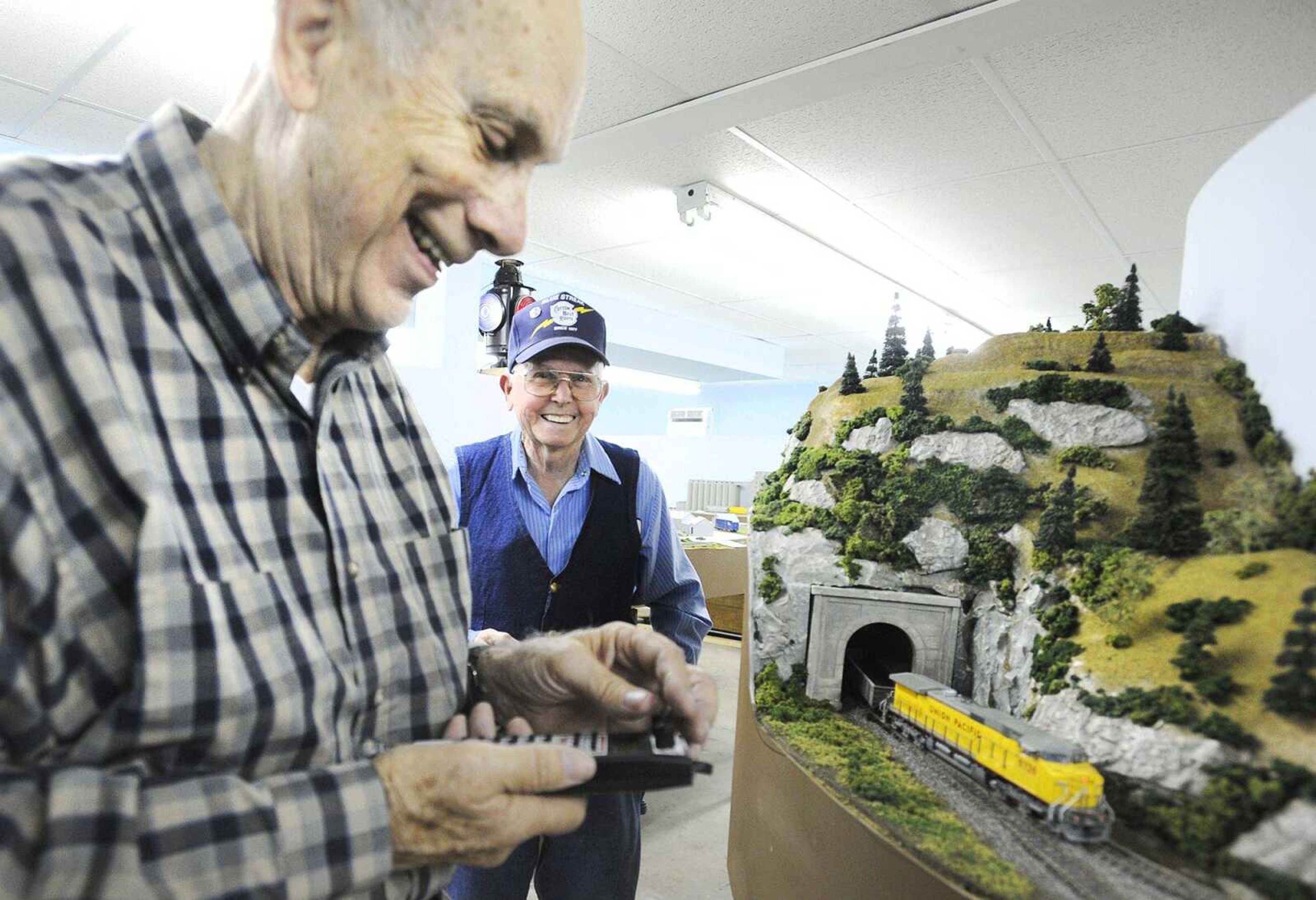All aboard! Upstairs room contains massive model railroad
Dean Coffin, hunched over and peering through the tiny tunnel, couldn't think why his train kept going in reverse. "It somehow reversed again; I don't know how," Coffin said, puzzling over the knobs on his remote control. "It did this before, but I don't know why."...
Dean Coffin, hunched over and peering through the tiny tunnel, couldn't think why his train kept going in reverse.
"It somehow reversed again; I don't know how," Coffin said, puzzling over the knobs on his remote control. "It did this before, but I don't know why."
Around the bend, Ron Mason, treasurer of the Missouri Southeastern Model Railroad Club, couldn't stifle his laughter any longer, and Coffin realized Mason had surreptitiously gained control of his engine.
"Modern-day train robbery!" he exclaimed.
In an upstairs room of Auto Trim Design in Cape Girardeau, the eight-person club has constructed a massive model railroad.

"Seems to me like it's in the neighborhood of 400 feet long, just the mainline track," Mason explained, but said that including ancillary track, the figure is close to 1,000 feet.
Mason was a conductor on the Cotton Belt line for 39 years and still wears his "Blue Streak" hat, which was the nickname of the Cotton Belt trains.
But not all members have real-world experience with trains.
President Ken Hosp said his interest in model trains began as do most people's -- with childhood toys.
"My uncle, who lived in Jefferson City, had a layout in his house basement," he said. It was a typical Lionel large-scale train, but Hosp loved it. He drifted away from it in early adulthood, but started building again when he had children about 25 years ago.

He found the club, which had started in 1997, and has been helping them build ever since.
The club members say they didn't model their current layout after any particular town or rail system. Rather, it's sprung directly from their imaginations, inspired by the surrounding area.
Their layout includes a farm with plowed fields and equipment, a quarry, a grain elevator, a commercial auto-transfer station, ethanol plant, two coal mines, two paper mills, two railroad yards and a downtown tableau, complete with a tiny yellow Firebird, eternally stopped at a railroad crossing.
It's an entire community, precisely 87 times smaller than real life.
"These are what's called H.O. scale," Hosp explained. "There are bigger ones and smaller ones, but this is the typical scale for hobbyists."
The locomotives and cars -- more than 200 in total -- bear real-world rail decals such as J.B. Hunt and Santa Fe, and the shipping containers bear real-world companies such as Maersk and Hyundai, among others. The club takes astonishing measures to ensure verisimilitude.
"See the [gravel] here along the tracks and how it's lighter than this over here?" Hosp asked, pointing to the darker gravel, called ballast, underneath the tracks near one of the coal mines. They've even simulated coal spillage, as would happen near a real mine.
"If you're into the hobby seriously like our club is, the detail is going to be much more [thought out]," Hosp explained.
"Ken's the master when it comes to detailing," said fellow member Dean Coffin.
The entire display is owned by the club and paid for by members' $10 monthly dues. Railcars average $20 to $30 apiece, and locomotives can run anywhere from $150 to $250.
Coffin said even though he has a small layout in his home, he's glad to be a club member and have access to the much larger set.
"It's big enough that you can really enjoy it," he said. "It takes a long time for the train to get around."
It's even large enough to lose a train in, if a conductor's not careful.
The club is always looking to expand on its layout, as well as its membership. Anyone interested in learning about the club or seeing the layout for themselves is encouraged to call Hosp at (573) 270-9126 or Mason at (573) 270-8048.
tgraef@semissourian.com
(573) 388-3627
Connect with the Southeast Missourian Newsroom:
For corrections to this story or other insights for the editor, click here. To submit a letter to the editor, click here. To learn about the Southeast Missourian’s AI Policy, click here.










